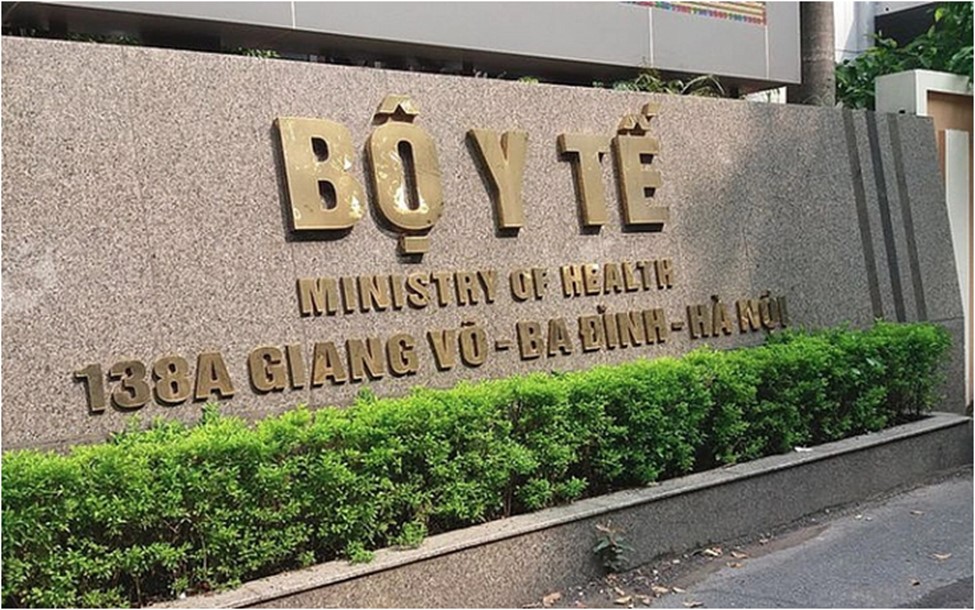Regulations on Classification of loans/debts and off-balance sheet commitments according to the quantitative method in Vietnam
Below are regulations on classification of loans/debts and off-balance sheet commitments according to the quantitative method in Vietnam

Regulations on Classification of loans/debts and off-balance sheet commitments according to the quantitative method in Vietnam (Image from the internet)
Classification of loans/debts and off-balance sheet commitments according to the quantitative method in Vietnam
According to Article 10 of Circular 31/2024/TT-NHNN regarding the classification of loans/debts and off-balance sheet commitments according to the quantitative method in Vietnam as follows:
- Banks and non-bank credit institutions shall classify debts (excluding the amounts paid on behalf of off-balance sheet commitments) into 05 groups:
+ Group 1 (Standard debts) includes:
(i) Debts that are current and assessed as being fully recoverable in both principal and interest on time;
(ii) Debts overdue by less than 10 days and assessed as being fully recoverable in overdue principal and interest, and the remaining principal and interest on time;
(iii) Debts classified into Group 1 as per Clause 2 of Article 10 of Circular 31/2024/TT-NHNN;
+ Group 2 (Watch-list debts) includes:
(i) Debts overdue up to 90 days, excluding those specified in points a(ii), Clause 2, Clause 3 of Article 10 of Circular 31/2024/TT-NHNN;
(ii) Debts that have been restructured for the first time and are still within the term, excluding debts specified in point b, Clause 2, Clause 3 of Article 10 of Circular 31/2024/TT-NHNN;
(iii) Debts classified into Group 2 as per Clause 2, Clause 3 of Article 10 of Circular 31/2024/TT-NHNN;
+ Group 3 (Substandard debts) includes:
(i) Debts overdue from 91 days to 180 days, excluding debts specified in Clause 3, Article 10 of Circular 31/2024/TT-NHNN
(ii) Debts extended for the first time that are still within the term, excluding debts specified at point b, Clause 2, Clause 3 of Article 10 of Circular 31/2024/TT-NHNN;
(iii) Debts that have been waived or interest reduced as the customer is unable to pay interest in full as agreed, excluding debts specified in Clause 3, Article 10 of Circular 31/2024/TT-NHNN;
(iv) Debts falling into one of the following cases that have not been recovered within less than 30 days from the date the bank or non-bank credit institution issues the recovery document (referred to as the date of the recovery decision):
++ Debts violating the provisions of Clauses 1, 3, 4, 5, 6 of Article 134 of The Law on Credit Institutions;
++ Debts violating the provisions of Clauses 1, 2, 3, 4 of Article 135 of The Law on Credit Institutions;
++ Debts violating the provisions of Clauses 1, 2, 5, 9 of Article 136 of The Law on Credit Institutions;
(v) Debts within the recovery period according to inspection and audit conclusions;
(vi) Debts that must be recovered according to early debt recovery decisions by the bank or non-bank credit institution due to customer violations of agreements with the bank, non-bank credit institution, which have not been recovered within less than 30 days from the recovery decision date;
(vii) Debts classified into Group 3 under the provisions of Clause 2, Clause 3 of this Article;
(viii) Debts that must be classified into Group 3 according to the provisions of Clause 4, Article 8 of this Circular;
+ Group 4 (Doubtful debts) includes:
(i) Debts overdue from 181 days to 360 days, excluding debts specified in Clause 3, Article 10 of Circular 31/2024/TT-NHNN;
(ii) Debts that have been restructured for the first time overdue up to 90 days according to the restructured repayment schedule, excluding debts specified in Clause 3, Article 10 of Circular 31/2024/TT-NHNN;
(iii) Debts that have been restructured for the second time and are still within the term, excluding debts specified at point b, Clause 2, Clause 3 of Article 10 of Circular 31/2024/TT-NHNN;
(iv) Debts specified at point c(iv), clause 1 of this Article that have not been recovered within the period from 30 to 60 days from the recovery decision date;
(v) Debts that must be recovered according to inspection and audit conclusions but have not been recovered within 60 days after the recovery deadline per the inspection or audit conclusions;
(vi) Debts that must be recovered according to early debt recovery decisions by the bank or non-bank credit institution due to customer violations of agreements with the bank or non-bank credit institution and have not been recovered within 30 to 60 days from the recovery decision date;
(vii) Debts classified into Group 4 under the provisions of Clause 2, Clause 3 of Article 10 of Circular 31/2024/TT-NHNN;
(viii) Debts that must be classified into Group 4 as per the provisions of Clause 4, Article 8 of this Circular;
+ Group 5 (Loss debts) includes:
(i) Debts overdue for more than 360 days;
(ii) Debts that have been restructured for the first time overdue by 91 days or more according to the restructured repayment schedule;
(iii) Debts that have been restructured for the second time overdue according to the restructured repayment schedule;
(iv) Debts that have been restructured for the third time or more, excluding debts specified at point b, Clause 2 of Article 10 of Circular 31/2024/TT-NHNN;
(v) Debts specified at point c(iv), clause 1 of article 10 of Circular 31/2024/TT-NHNN that have not been recovered for more than 60 days from the recovery decision date;
(vi) Debts that must be recovered according to inspection and audit conclusions but have not been recovered for more than 60 days after the recovery deadline per the inspection or audit conclusions;
(vii) Debts that must be recovered according to early debt recovery decisions by the bank or non-bank credit institution due to customer violations of agreements with the bank or non-bank credit institution, which have not been recovered for more than 60 days from the recovery decision date;
(viii) Debts owed by customers who are credit institutions under special control, foreign bank branches under asset seizure;
(ix) Debts classified into Group 5 under the provisions of Clause 3, Article 10 of Circular 31/2024/TT-NHNN;
(x) Debts that must be classified into Group 5 according to the provisions of Clause 4, Article 8 of Circular 31/2024/TT-NHNN.
- A debt is classified into a lower risk group under the following conditions:
+ For overdue debts, the bank or non-bank credit institution may reclassify it into a lower risk group (including Group 1) if the following conditions are met:
(i) The customer has fully paid the overdue principal and interest (including the interest applied to the overdue principal) and principal and interest of subsequent terms (if any) for a minimum period of 03 (three) months for medium and long-term debts, or 01 (one) month for short-term debts, from the date of starting to pay the overdue principal and interest in full;
(ii) There are documents proving the customer has paid the debts;
(iii) The bank or non-bank credit institution has enough information and documents to assess the customer's ability to fully repay the remaining principal and interest on time;
+ For restructured debts, the bank or non-bank credit institution may reclassify it into a lower risk group (including Group 1) if the following conditions are met:
(i) The customer has fully paid the restructured principal and interest (if any) for a minimum period of 03 (three) months for medium and long-term debts, or 01 (one) month for short-term debts, from the date of starting to repay the restructured principal or interest in full; if both principal and interest have the same repayment term, from the date of starting to repay both principal and interest in full;
(ii) There are documents proving the customer has paid the debts;
(iii) The bank or non-bank credit institution has enough information and documents to assess the customer's ability to fully repay the remaining principal and interest on the restructured repayment schedule;
+ For debts with waived or reduced interest according to State Bank regulations on credit institutions, foreign bank branches restructuring repayment terms, waiving, reducing interest, fees, and maintaining debt groups to support customers affected by Covid-19, the bank or non-bank credit institution may reclassify it into a lower risk group (including Group 1) if the following conditions are met:
(i) The customer has fully paid the principal and interest for a minimum period of 03 (three) months for medium and long-term debts, or 01 (one) month for short-term debts, from the date of starting to repay the nearest repayment term's principal or interest after the customer is no longer waived or reduced interest; if both principal and interest have the same repayment term, from the date of starting to repay the nearest repayment term's principal and interest in full after the customer is no longer waived or reduced interest;
(ii) There are documents proving the customer has paid the debts;
(iii) The bank or non-bank credit institution has enough information and documents to assess the customer's ability to fully repay the remaining principal and interest on time.
- A debt is classified into a higher risk group under the following conditions:
+ Declining Profitability: Financial indicators such as profitability, liquidity, debt-to-capital ratio, and cash flow indicate a continuous decline in the customer's ability to repay debts over three consecutive evaluations or debt reclassifications;
+ Incomplete Information: The customer fails to provide complete, prompt, and accurate information as requested by the bank or non-bank credit institution for assessing the customer's repayment ability;
+ Persistent High Risk: The debt has been classified into Groups 2, 3, or 4 as per points a, b of this clause for over a year without meeting the criteria for reclassification to a lower risk group;
+ Administrative Penalty: The lending activity associated with the debt has been penalized according to legal regulations.
- Classification of Off-Balance Sheet Commitments and Amounts Paid on Behalf of Off-Balance Sheet Commitments
+ Classification of Off-Balance Sheet Commitments:
(i) Classified into Group 1 if the bank or non-bank credit institution assesses that the customer is capable of fully performing the obligations under the commitment;
(ii) Classified into Group 2 or higher if the bank or non-bank credit institution assesses that the customer is not capable of performing the obligations under the commitment;
(iii) Classified into Group 3 or higher for off-balance sheet commitments in one of the cases specified in point c(iv), Clause 1, Article 10 of Circular 31/2024/TT-NHNN;
+ Classification of Amounts Paid on Behalf of Off-Balance Sheet Commitments:
(i) The overdue date is calculated from the date the bank or non-bank credit institution fulfills the obligation under the commitment;
(ii) Amounts paid on behalf of off-balance sheet commitments are classified as follows:
- Classified into Group 3 if overdue for less than 30 days;
- Classified into Group 4 if overdue from 30 to less than 90 days;
- Classified into Group 5 if overdue from 90 days or more.
In cases where the amount paid on behalf of the commitment is classified into a lower risk group than the off-balance sheet commitment that has already been classified, it must be moved to the risk group classified for the commitment.
Le Nguyen Anh Hao
- Number of deputy directors of departments in Vietnam in accordance with Decree 45/2025/ND-CP
- Cases ineligible for pardon in Vietnam in 2025
- Decree 50/2025 amending Decree 151/2017 on the management of public assets in Vietnam
- Circular 07/2025 amending Circular 02/2022 on the Law on Environmental Protection in Vietnam
- Adjustment to the organizational structure of the Ministry of Health of Vietnam: Certain agencies are no longer listed in the organizational structure
- Vietnam aims to welcome 22-23 million international tourists in Vietnam in 2025
-

- Number of deputy directors of departments in Vietnam ...
- 15:04, 05/03/2025
-

- Cases ineligible for pardon in Vietnam in 2025
- 14:43, 05/03/2025
-

- Decree 50/2025 amending Decree 151/2017 on the ...
- 12:00, 05/03/2025
-

- Circular 07/2025 amending Circular 02/2022 on ...
- 11:30, 05/03/2025
-

- Adjustment to the organizational structure of ...
- 10:34, 05/03/2025
-
.Medium.png)
- Notable documents of Vietnam in the previous week ...
- 16:11, 02/04/2025
-
.Medium.png)
- Notable new policies of Vietnam to be effective ...
- 16:04, 02/04/2025
-
.Medium.png)
- Notable new policies of Vietnam effective from ...
- 14:51, 21/03/2025
-

- Notable documents of Vietnam in the previous week ...
- 16:01, 20/03/2025
-
.Medium.png)
- Notable new policies of Vietnam effective as of ...
- 16:50, 14/03/2025
 Article table of contents
Article table of contents
